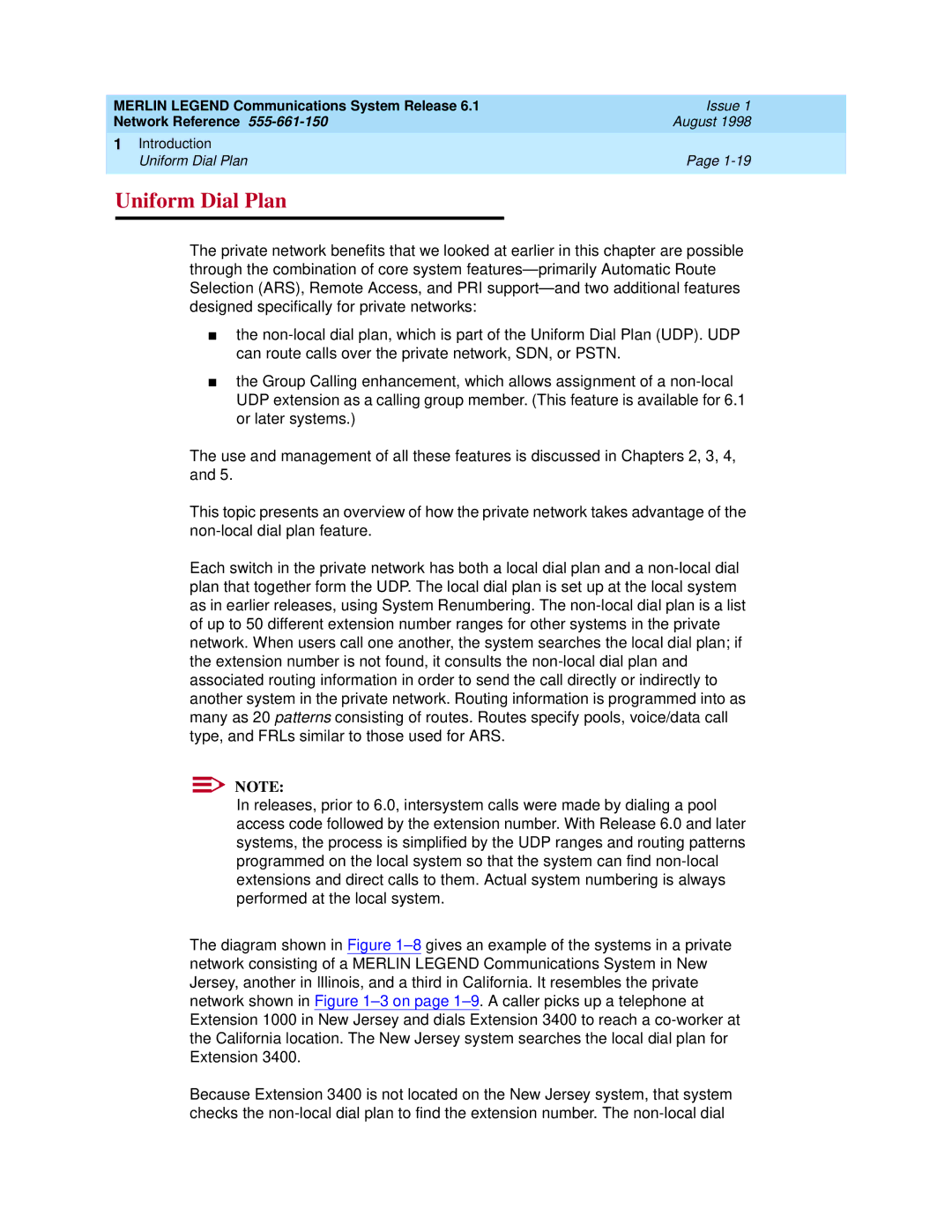MERLIN LEGEND Communications System Release 6.1 | | Issue 1 |
Network Reference 555-661-150 | | August 1998 |
1 Introduction | | |
| Uniform Dial Plan | | Page 1-19 |
| | | |
| Uniform Dial Plan | 1 |
| | | |
The private network benefits that we looked at earlier in this chapter are possible through the combination of core system features—primarily Automatic Route Selection (ARS), Remote Access, and PRI support—and two additional features designed specifically for private networks:
■the non-local dial plan, which is part of the Uniform Dial Plan (UDP). UDP can route calls over the private network, SDN, or PSTN.
■the Group Calling enhancement, which allows assignment of a non-local UDP extension as a calling group member. (This feature is available for 6.1 or later systems.)
The use and management of all these features is discussed in Chapters 2, 3, 4, and 5.
This topic presents an overview of how the private network takes advantage of the non-local dial plan feature.
Each switch in the private network has both a local dial plan and a non-local dial plan that together form the UDP. The local dial plan is set up at the local system as in earlier releases, using System Renumbering. The non-local dial plan is a list of up to 50 different extension number ranges for other systems in the private network. When users call one another, the system searches the local dial plan; if the extension number is not found, it consults the non-local dial plan and associated routing information in order to send the call directly or indirectly to another system in the private network. Routing information is programmed into as many as 20 patterns consisting of routes. Routes specify pools, voice/data call type, and FRLs similar to those used for ARS.
NOTE:
In releases, prior to 6.0, intersystem calls were made by dialing a pool access code followed by the extension number. With Release 6.0 and later systems, the process is simplified by the UDP ranges and routing patterns programmed on the local system so that the system can find non-local extensions and direct calls to them. Actual system numbering is always performed at the local system.
The diagram shown in Figure 1–8 gives an example of the systems in a private network consisting of a MERLIN LEGEND Communications System in New Jersey, another in Illinois, and a third in California. It resembles the private network shown in Figure 1–3 on page 1–9. A caller picks up a telephone at Extension 1000 in New Jersey and dials Extension 3400 to reach a co-worker at the California location. The New Jersey system searches the local dial plan for Extension 3400.
Because Extension 3400 is not located on the New Jersey system, that system checks the non-local dial plan to find the extension number. The non-local dial
